George Lucas | 2hr 22min
This review was requested by Harry, who shared the following thoughts:
“I believe this film is overlooked for its abundance of visual beauty and could benefit from more appreciation in this regard.“

Ten years have passed since Obi-wan Kenobi took on Anakin Skywalker as his Jedi apprentice in The Phantom Menace, though in real time, George Lucas had only three years to refine his digital craftsmanship and mythic storytelling for its sequel. Now shooting entirely on digital cameras and pioneering more complex compositing techniques, his technical execution is more closely aligned with his hefty ambition, serving a greater immersion into the political intrigue, conflict, and tragedy of a crumbling galactic democracy.
It arrives at a crucial turning point in the series too, as Attack of the Clones edges much closer to darkness than before, sprouting the seeds of war and betrayal beneath the polished façade of diplomacy. Though the Separatist star systems breaking away from the Republic appear to be the greatest threat on the horizon, the rot at the heart of bureaucracy and order spreads through sinister machinations, orchestrated by a phantom cloaked in legitimacy. So too does a now grown-up Anakin begin to break beneath the weight of duty and desire, and it is through that psychological tension where destiny twists into tragedy, casting a long shadow over the epic sweep of the Star Wars saga.
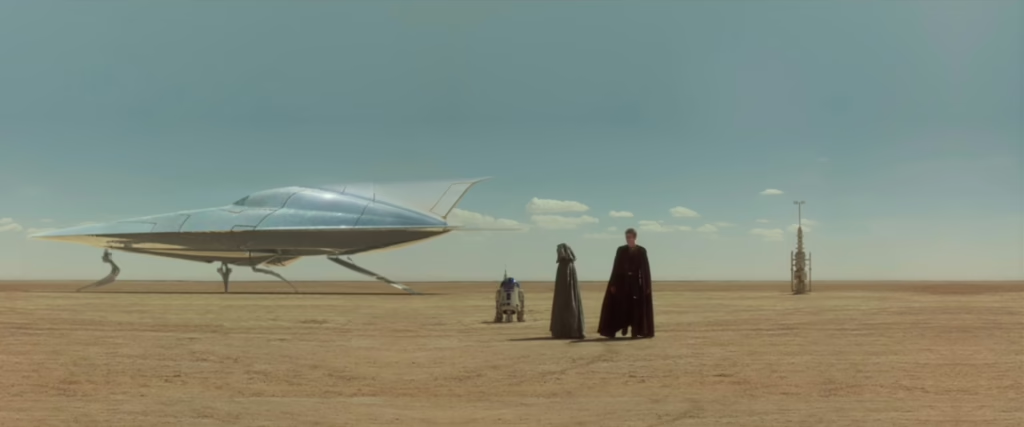
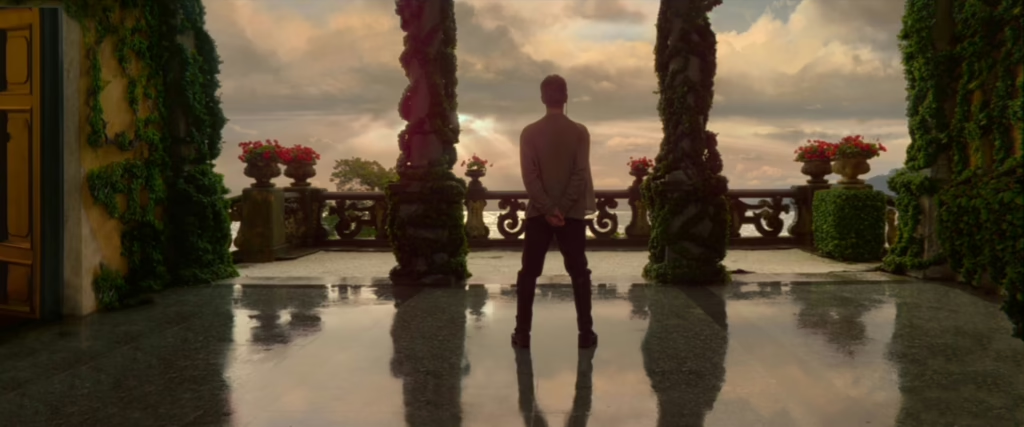
Although we are familiar with many of the settings from Episode I, Lucas seems rejuvenated in his reimagining of these planets, tying them even more deliberately to distinct genres that shape the emotional and political dimensions of the Republic’s unravelling. On the pastoral planet Naboo, Anakin and Padmé’s romance takes the form of melodrama with its idyllic scenery and private, romantic sanctuaries, while their return to Tatooine draws its sun-scorched landscapes to the forefront in a classic Western quest for revenge.
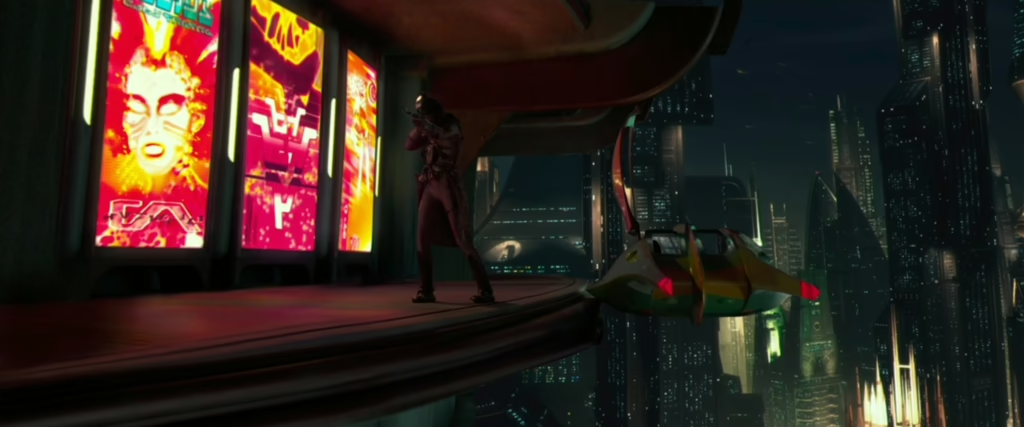

It is in Lucas’ opening scenes though where he most confidently blends genre and worldbuilding through the neo-noir, cyberpunk sprawl of Coruscant, sending Anakin and Obi-Wan flying through a dense urban forest of skyscrapers after Padmé’s would-be assassin. Neon lights of yellow, red, and blue pierce the darkness as they navigate the vertical cityscape, moodily evoking Blade Runner’s urban futurism and demonstrating just how far Lucas’ visual effects have come since The Phantom Menace. Even the Venetian blinds of Yoda’s private sanctum call on classic genre iconography, while Obi-Wan’s continued investigation through Coruscant’s seedy bars, diners, and libraries further expands Lucas’ crime thriller sensibilities. From there, he is led to the remote planet of Kamino, where white, sterile laboratories veer the film towards biopunk territory. As it turns out, this is not only where the assassin was dispatched from – it is also the site of a major genetic project, secretly breeding armies of clones for the Republic to deploy against the Separatists.
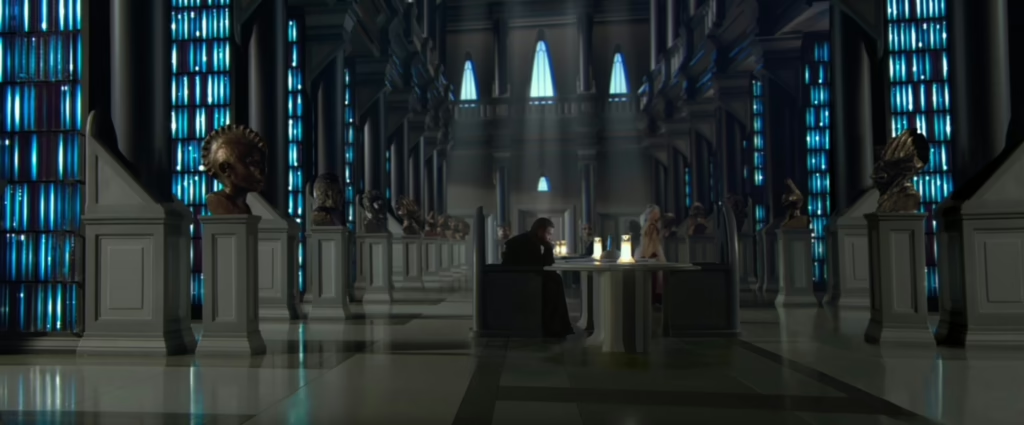
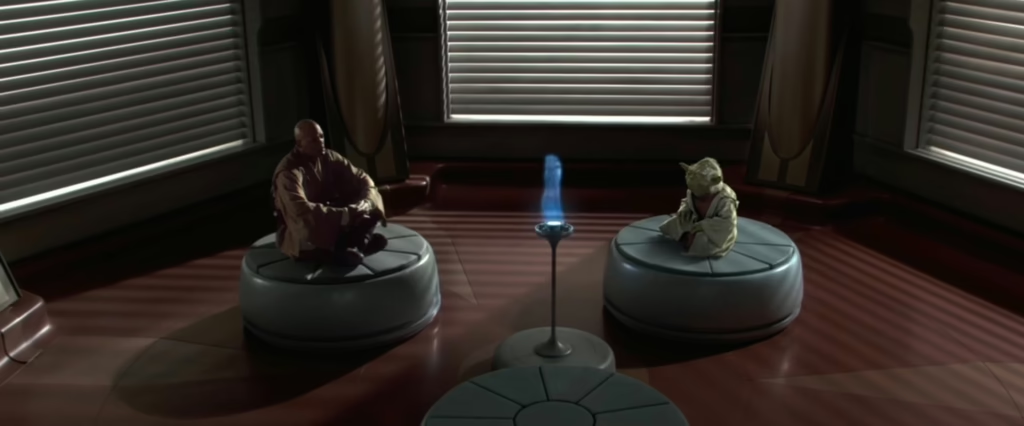
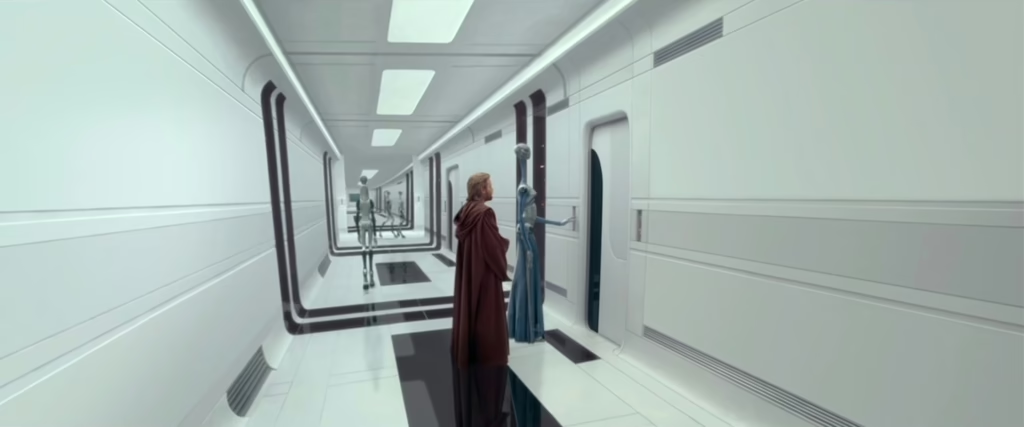
It is no coincidence that Kamino is hosting interests from both sides of the conflict. Unbeknownst to many, the true architect of this diplomatic breakdown lies at the head of the Republic, covertly engineering a crisis that will justify the consolidation of emergency powers – thanks to Senator Jar Jar Binks, no less. While Padmé’s arched penthouse suite bathes in deep blue tones and serene grace, the saturated reds of Chancellor Palpatine’s office aggressively underscore his true alignment with the Sith, foreshadowing calculated, duplicitous motives. Although the brotherly rapport between Obi-Wan and Anakin is thoughtfully developed, Palpatine understands the padawan’s insecurities and ambitions on a far more intimate level, grooming him with the validation that the Jedis are unwilling to offer.

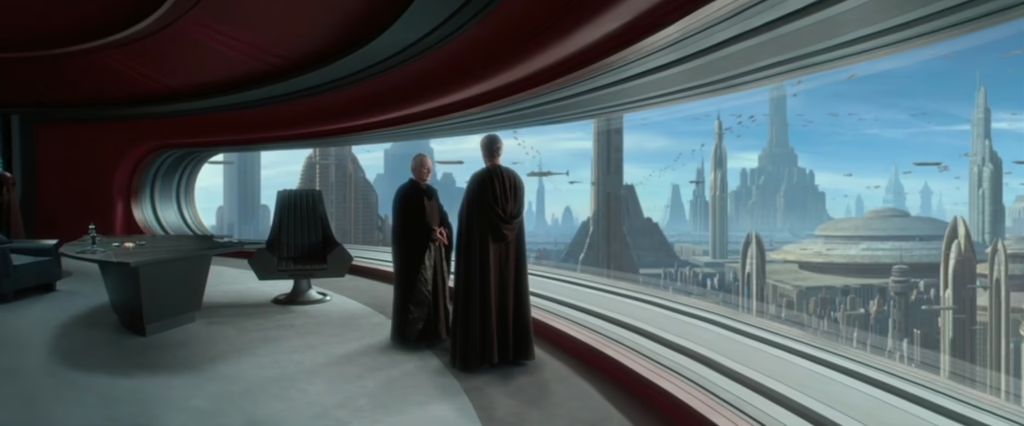
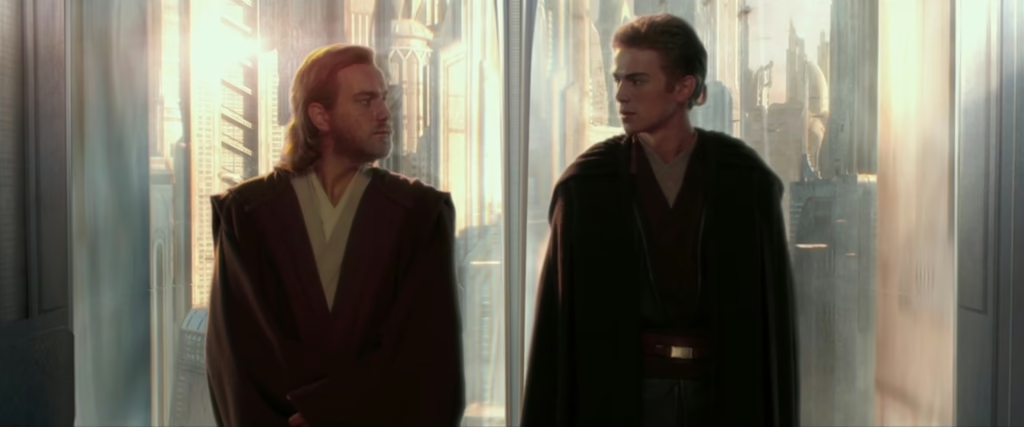
There’s no getting around the abject failure of Lucas’ writing when Anakin’s story takes him to Naboo though, undercutting his romantic temptation through awkward, stilted dialogue. “I wish that I could just wish away these feelings,” he clunkily confesses, surpassing even the inelegance of his pseudo-philosophical reflection on sand’s coarse, rough texture, and exposing the limits of Hayden Christensen’s strained performance. When Lucas isn’t dwelling on the janky motions of CGI creatures, at least his visual designs somewhat compensate for the emotional flatness of Anakin’s story arc, simply basking in the terracotta patios and waterfalls of their lakeside retreat. Far away from the Jedi, he is willing to let his autocratic leanings casually seep through, and when clairvoyant dreams of his imperilled mother lead him back to his home planet Tatooine, there we see them take tangible, fearsome form.
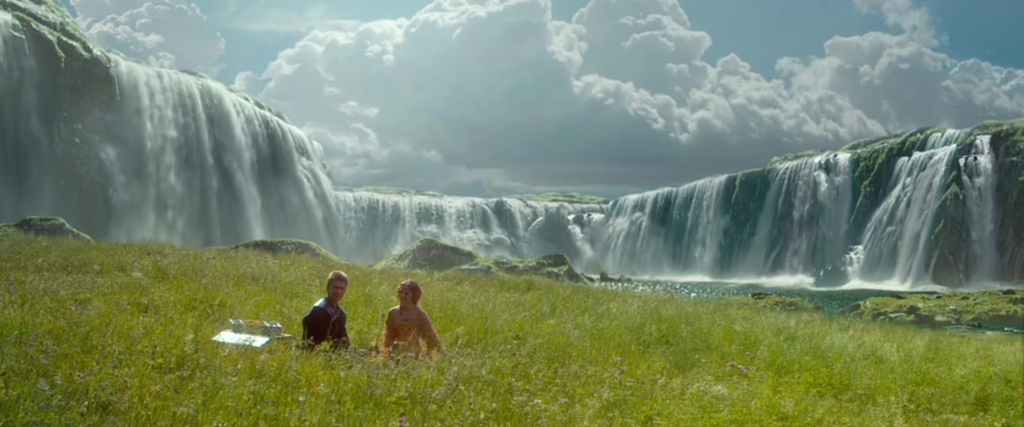
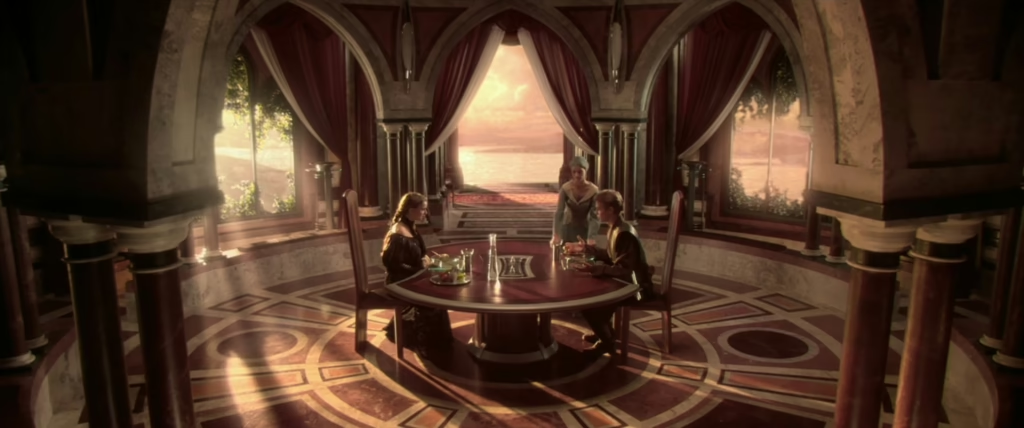
Lucas’ adoration of The Searchers was apparent in the original Star Wars film, and now as Anakin embarks on a mission to rescue an innocent woman from a native tribe, his mounting fury and persistence further recasts him as an Ethan Hunt-like figure. This is well and truly the Western segment of Attack of the Clones, drawing beautifully from the magic hour of twin setting suns, and unleashing a ruthless, retributive violence that offers our first true glimpse at Darth Vader. Having failed to save his mother, Anakin bitterly recounts his actions to a horrified Padmé, and John Williams’ score hints an ominous, half-formed echo of ‘The Imperial March’.
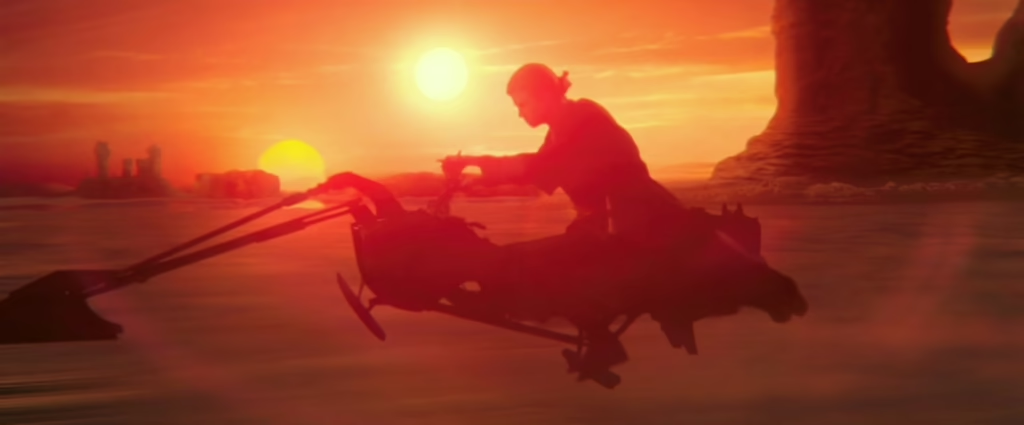
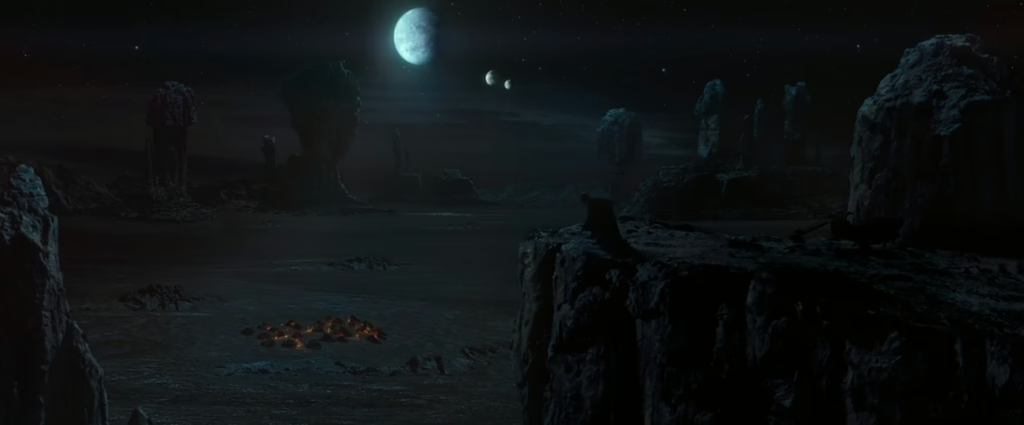
With Naboo setting the stage for Anakin’s emotional compromise and Tatooine as the site of his moral collapse, Lucas collapses two major pillars upon which his commitment to the Jedi Order rests. Likewise, the epicentre of political corruption that is Coruscant and Kamino’s ethically questionable bioengineering illustrates systemic failures on a much larger scale, collectively revealing a Republic being hollowed out from within. As such, the foundations are thoroughly laid for these personal, institutional, and ideological fractures to coalesce on the desert planet Geonosis, where Attack of the Clones fully transforms into a war movie.
Once again, Lucas’ temperamental digital effects backfire in the conveyer belt set piece that sends Anakin and Padmé through a barrage of molten steel and mechanical chaos, and only partially recovers only once they are captured by Count Dooku and forced into a gladiatorial arena with Obi-Wan. The blend of physical miniatures and CGI here is a little more cohesive, detailing a primitive colosseum moulded from red clay in sweeping high angles, and embracing the sword-and-sandal aesthetic of Hollywood epics such as Spartacus. It is the arrival of the Jedi Council with their newly manufactured Clone Troopers which marks the true escalation of this conflict though, and the first of many battles to come in the legendary Clone Wars.
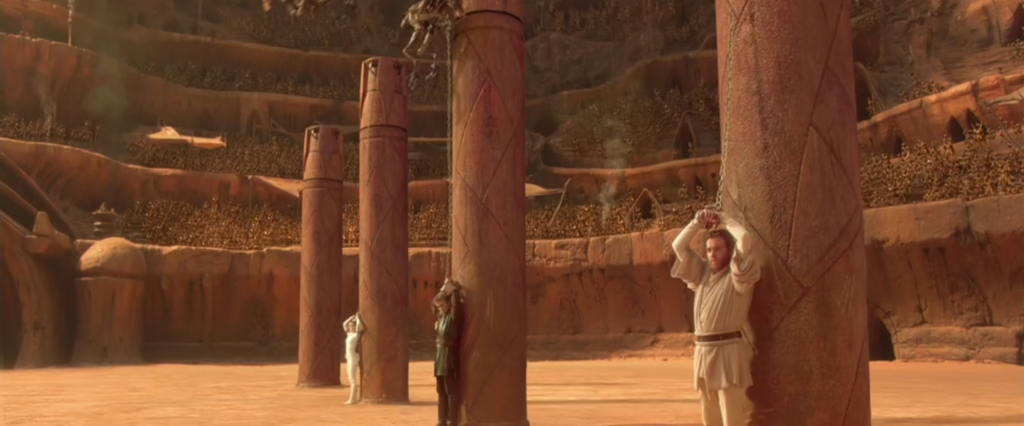
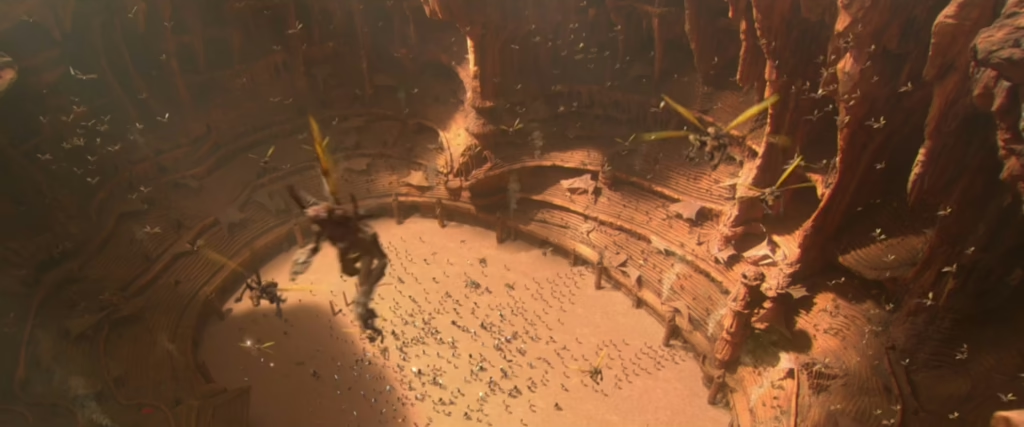


As the second episode in this trilogy, Lucas deliberately echoes the tonal shift of The Empire Strikes Back, where the Jedi are left scrambling in their fight against the dark side. Despite a solid showing from Obi-Wan, Anakin, and a surprisingly agile Yoda against Count Dooku, the Sith Lord escapes, severing Anakin’s arm in the process – and incidentally mirroring the duel with his own son many years later. The Republic’s success in the Battle of Geonosis is no true victory, Yoda solemnly warns, and our return to the scenic harmony of Naboo where Anakin and Padme elope only confirms this. This union, transgressing the Jedi vows of chastity and submitting to the clouded judgement of passion, will inevitably fuel that paranoid obsession which will transform the entire galaxy. For now though, Lucas thoughtfully allows this melancholy illusion of peace to linger through the closing seconds of Attack of the Clones, knowing full well that a corrosive, insidious decay has already begun eating away at the heart of its most promising hero.
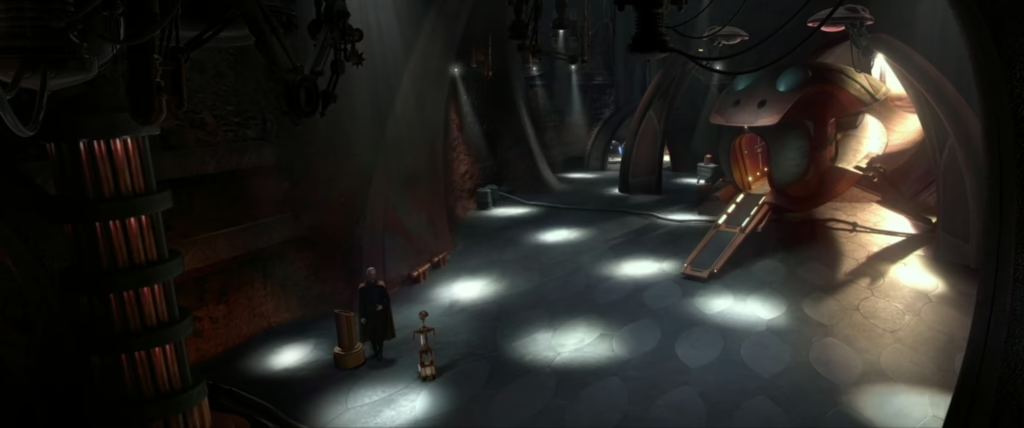
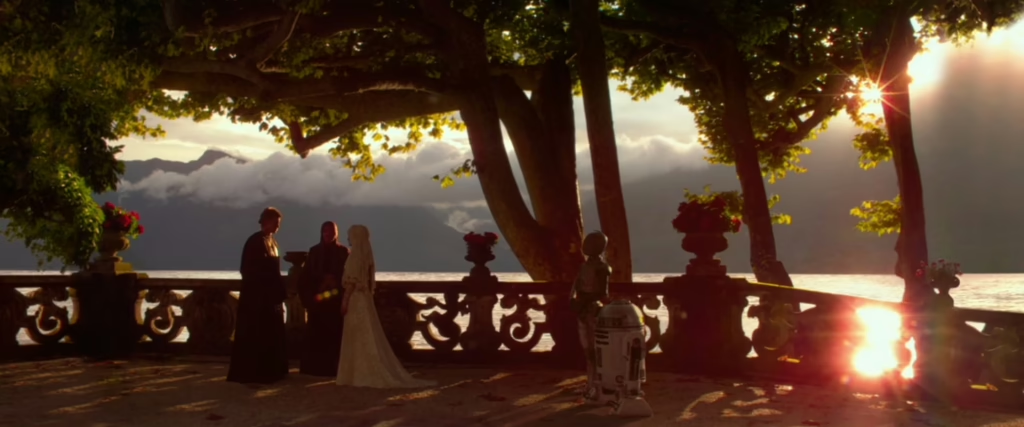

Star Wars: Episode II – Attack of the Clones (2002) is currently streaming on Disney+, and is available to buy on Apple TV, YouTube, and Amazon Video.
Have a film you’d like me to write about next? Request a review here.

